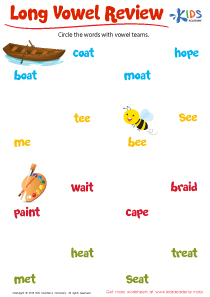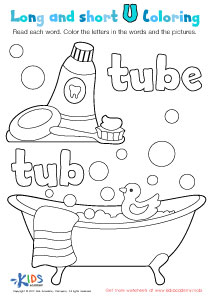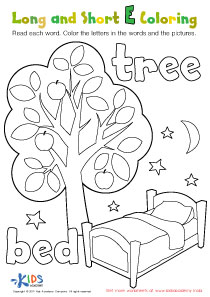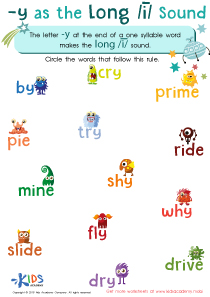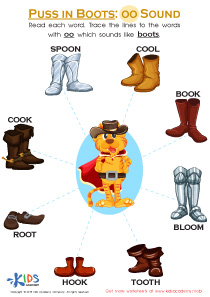Silent Vowels Worksheets for Ages 6-9
5 filtered results
-
From - To
Welcome to our Silent Vowels Worksheets for Ages 6-9! Designed to enhance your child's reading and writing skills, these engaging worksheets introduce the concept of silent vowels in a fun and accessible way. Perfect for young learners, each activity encourages them to identify silent vowels in words, improving their phonemic awareness and vocabulary. With a variety of exercises, including fill-in-the-blank and matching activities, children will enjoy practicing at their own pace. Our resources are easy to use, printable, and align with educational standards, making learning effective and enjoyable. Start helping your child master silent vowels today!
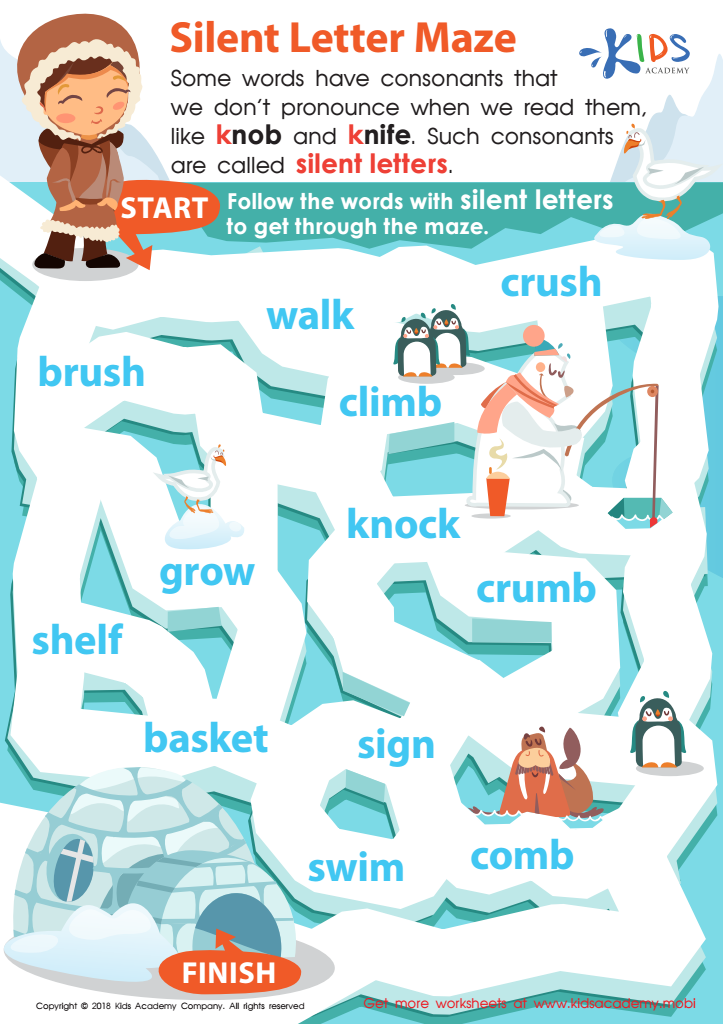

Silent Letter Maze Worksheet
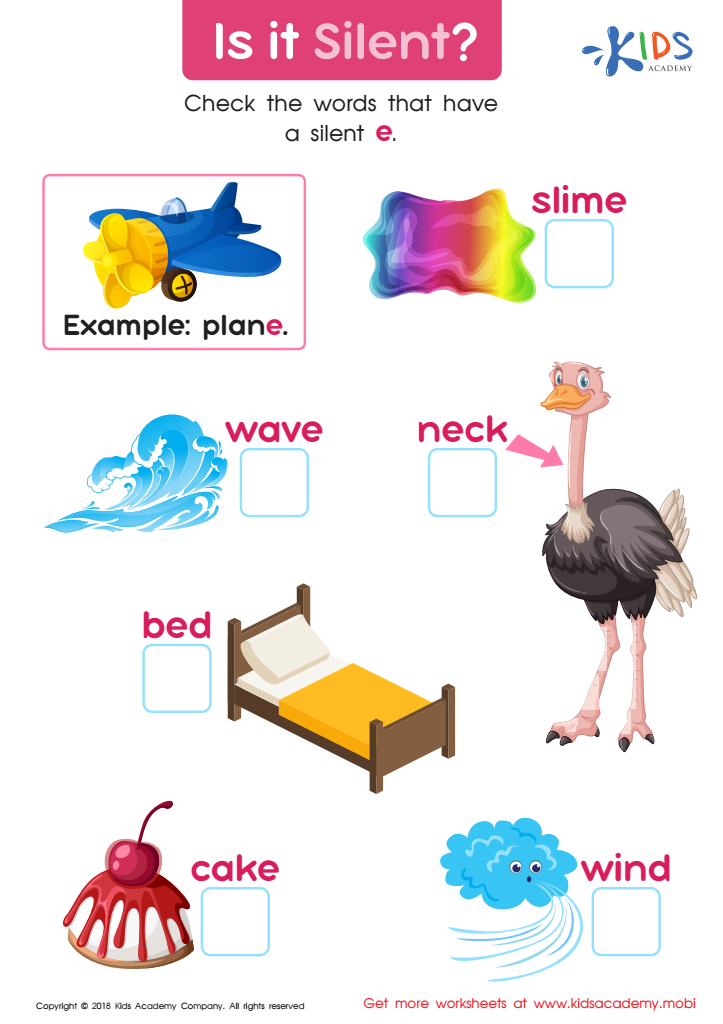

Is It Silent? Worksheet
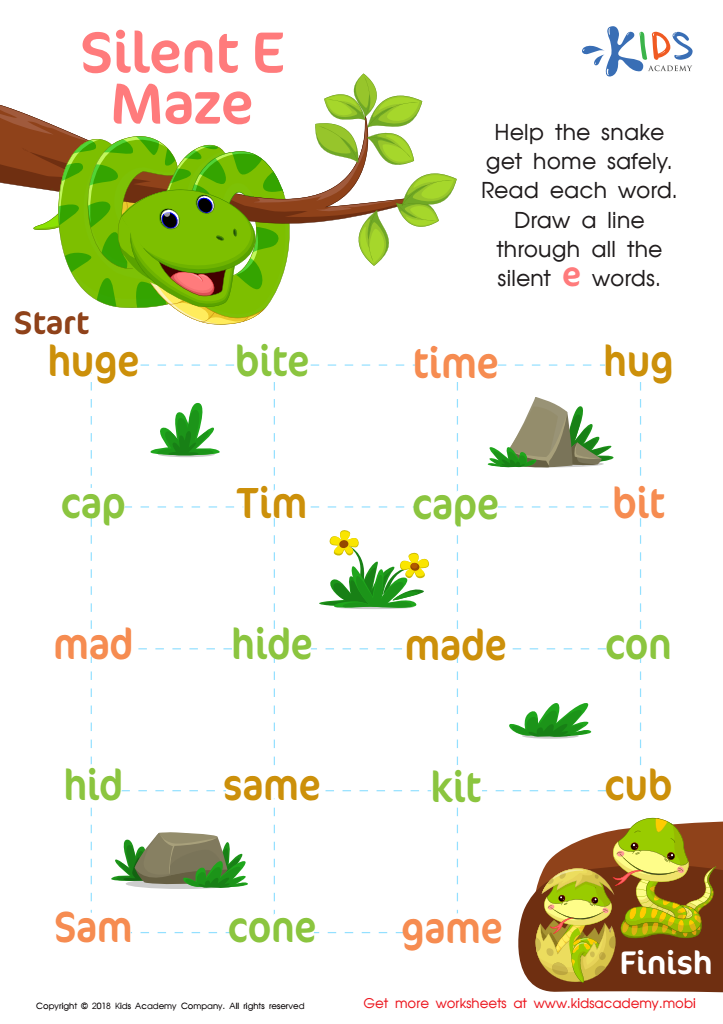

Silent E Maze Worksheet
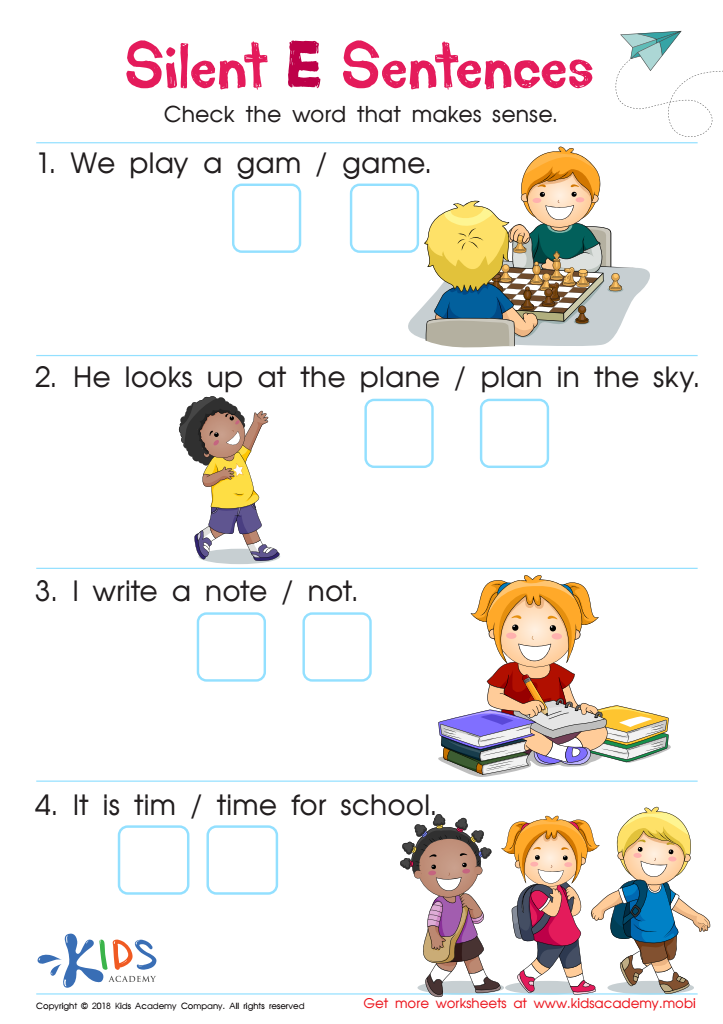

Silent E Sentences Worksheet
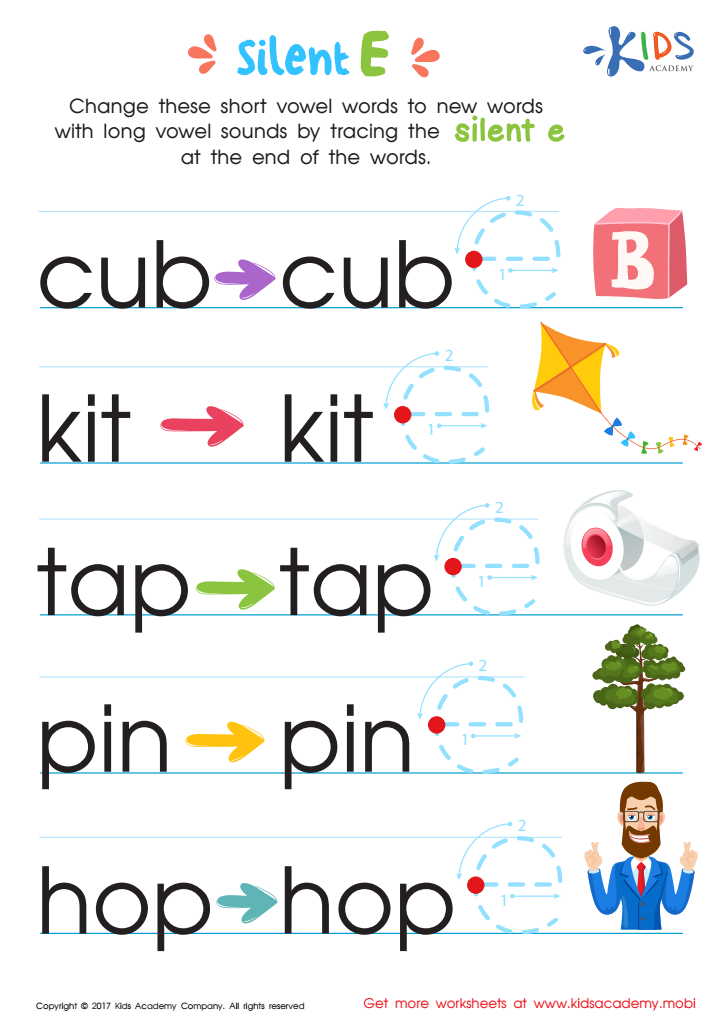

Silent E Words Worksheet
Silent vowels are essential for young readers aged 6-9 because they play a significant role in spelling, pronunciation, and comprehension. When children encounter words with silent vowels, understanding their function helps build phonemic awareness—essential for reading fluently. For instance, in words like "cake" or "time," the silent "e" influences how the preceding vowel is pronounced, a concept that enhances a child's ability to decode unfamiliar words.
Furthermore, recognizing silent vowels fosters better vocabulary development. As children expand their reading, they'll encounter more complex texts where silent vowels are present, facilitating deeper engagement with the material. This recognition also contributes to improved spelling skills, as children learn the rules associated with silent vowels and apply them to their writing.
Teachers and parents should emphasize silent vowels during reading activities and discussions, encouraging children to spot these patterns and practice them through games or challenges. By doing so, they'll cultivate an awareness of language that not only enhances reading fluency but also nurtures a love for words. Ultimately, understanding silent vowels lays a foundational skill set that supports academic success across subjects, making it crucial for adults to prioritize this learning aspect.
 Assign to My Students
Assign to My Students


